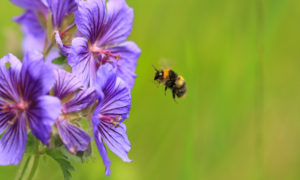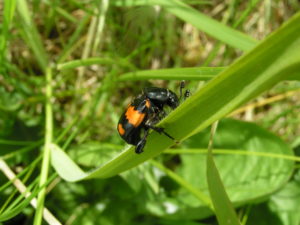Insects are everywhere, often overlooked, but playing vital roles in almost every ecosystem. Meet some incredible insects, the miniature miracle-workers, that help keep our world running.
Pollinators

When you think about the benefits of having insects around, pollination is probably the first thing that springs to mind. There’s a good reason for this, since 87% of all plant species require animal pollination and most of this is delivered by insects. In fact, around three-quarters of all crop types grown by humans need to be pollinated by insects.
Bees are the most famous pollinators, bumbling between flowers on sunny days, their gentle buzzing part of the soundtrack of summer. But all kinds of insects play important roles as pollinators, including flies, beetles, butterflies, moths and hoverflies.
The poo police
For most of us, a big pile of poo is a pretty unappealing prospect. But for some creatures, there’s no finer sight than a massive mound of dung. By feasting on faeces, these flies, beetles and other waste-loving wildlife prevent poo from building up in pastures, improve soils and even help control pests.
Rollers get most of the attention; the beetles often seen on nature shows, rolling balls of poo across the African savannah like a child intent on building an enormous snowman. But rollers aren’t found in the UK, instead our dung beetles are either tunnellers or dwellers. Tunnellers, like the mighty minotaur beetle, drag dung down into their burrows to feed their larvae, whereas dwellers can spend their entire lives within the confines of a dung pile.
Worms and flies also munch on mounds of dung. In summer you might spot yellow dung flies courting on cow pats, males competing for the attention of the females that lay their eggs in the dung. Only the larvae feed on faeces, the adult flies are ambush predators of hoverflies and other insects.
Yellow dung fly ©Nick Upton from Wildlife Trusts on Vimeo.
Keep calm and carrion

If you’re not keen on the idea of piles of poo left littering the landscape, imagine how
much worse things would be without the host of insects that feed on carrion. Animal carcasses could take months to rot without the swift action of maggots and beetles, like the bright, orange-splashed sexton beetles. Male and female sexton beetles work together to dig beneath the bodies of dead birds and small mammals, burying them to create a larder for their growing larvae.
Feed the birds (and other wildlife)
Insects are a vital food source for many species, including bats, reptiles, amphibians, fish and birds. Great spotted woodpeckers hammer at rotting wood, prying beetle larvae from behind the bark with their long tongue. Blue tits collect caterpillars to feed their chicks, with a single chick needing up to 100 caterpillars a day. Daubenton’s bats scoop aquatic insects from the surface of lakes and rivers, while pipistrelles hunt down midges and mosquitos in mid-air.
But falling insect numbers have already been linked to declines in some of the species that rely on them, like the spotted flycatcher, a bird whose UK population plummeted by 93% between 1967 and 2016. These aerial acrobats swoop from a perch to snatch flying insects, both to feed themselves and to supply to their chicks, so their survival is dependent on finding enough insect prey. If our insects disappear, so will the countless other species that depend on them.
Spotted flycatcher feeding chicks ©John Bridges from Wildlife Trusts on Vimeo.
What about wasps?
Some insects have a bad reputation. Ants and wasps aren’t the most popular creatures, but they’re no less important than the more widely appreciated species like butterflies and dragonflies. Wasps are pollinators and “pest controllers”, hunting many of the insects that feed on our crops. Ants (and wasps and other burrowers) aerate the soil, digging tunnels that help transport oxygen, water and nutrients to plant roots – they’re also a favourite snack of the green woodpecker.
Insects in trouble
We’re facing a global biodiversity crisis, with many species declining at an alarming rate. Animals and plants that were once common are now scarce, and insects are no exception. Recent evidence suggests that insect abundance may have declined by 50% or more since 1970, but insect declines are not as well studied as those in larger animals, like birds and mammals. The best data we have in the UK is for butterflies and moths, which show a broad decline. You can read more about our disappearing insects in Insect declines and why they matter.
But it’s not too late. Insect populations can recover rapidly if given the chance. To bring about this recovery, we have to make more space for insects. Gardens can be a haven for wildlife, helping connect up wild places in our wider landscape, creating a Nature Recovery Network that enables nature to live alongside us. Find out how you can help: